The National Museum confirms: Shipwrecks in Costa Rica are Danish slave ships
Investigations of ship timbers, bricks from the cargo and clay pipes found during underwater excavations in Costa Rica confirm that the site holds two Danish slave ships that, according to historical sources, were shipwrecked off the coast of Central America in 1710.
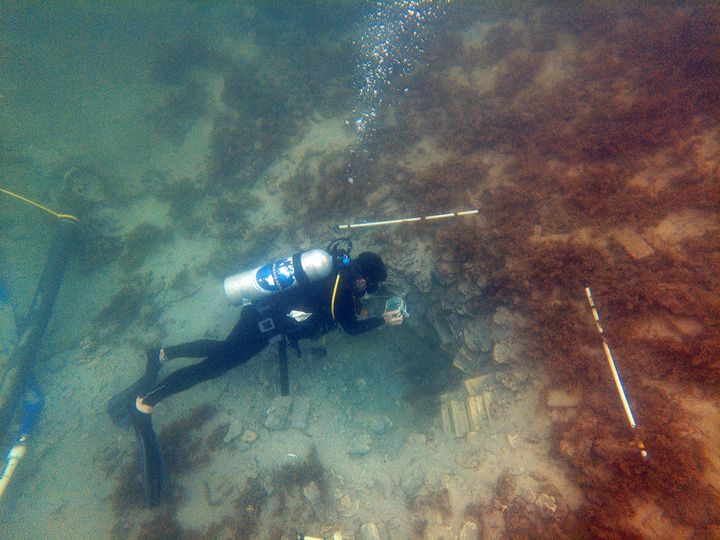
For the first time, it has now been documented that two shipwrecks in Costa Rica are two named, Danish slave ships from the 18th century.
This is revealed by scientific analyses from an underwater excavation in 2023, when marine archaeologists from the National Museum of Denmark and the Viking Ship Museum - in close cooperation with the local NGO Centro Comunitario de Buceo Embajadores y Embajadoras del Mar - took samples of wood from one of the wrecks and from the bricks that were part of the cargo more than 300 years ago. Moreover, several clay pipes were found.
“The analyses are very convincing and we no longer have any doubts that these are the wrecks of the two Danish slave ships. The bricks are Danish and the same goes for the timbers, which are additionally charred and sooty from a fire. This fits perfectly with the historical accounts stating that one of the ships burnt,” says David Gregory, marine archaeologist and research professor at the National Museum of Denmark where he is head of the new maritime research centre Njord.
David Gregory led the excavations in Costa Rica together with the National Museum of Denmark’s marine archaeologist Andreas Kallmeyer Bloch, who has worked for several years to shed light on the origins of the ships.
“It’s been a long process and I’ve come close to giving up along the way, but this is undoubtedly the craziest archaeological excavation I’ve yet been part of. Not only because it matters greatly to the local population, but also because it’s one of the most dramatic shipwrecks in the history of Denmark, and now we know exactly where it happened. This provides two pieces that have been missing from the history of Denmark,” says Andreas Kallmeyer Bloch.
What the analyses show
Samples from the excavation have been analysed at the National Museum of Denmark and at the University of Southern Denmark, and they confirm what the historical sources say about the history of the ships.
Dendrochronological analyses (tree-ring dating) of oak wood from one of the wrecks show that the timbers originate in the western part of the Baltic Sea – an area that encompasses the north-eastern German province of Mecklenburg, as well as Schleswig-Holstein, Denmark and Scania – and that the tree was cut down sometime during the years 1690-1695. The wood is, moreover, charred and sooty, which confirms what historical sources say about one of the ships being set ablaze.
The bricks are of the same measurements as the so-called Flensburg bricks that were used in Denmark and in the Danish colonies. Analyses of the clay, carried out by Professor Emeritus Kaare Lund Rasmussen at the University of Southern Demark, show that the clay comes from Denmark – quite specifically from either Iller Strand or Egernsund. Both locations are situated by Flensburg Fjord which was, in the 18th century, home to a sizeable brick-producing industry.
The clay pipes have been identified as ordinary, Dutch-produced pipes that were also used onboard Danish ships. The size, shape and patterns of the pipes suggest that they were produced in the period right before the ships became wrecked in 1710. Clay pipes were rarely used for more than five years.
The two slave ships
According to historical sources, the two Danish slave ships Fridericus Quartus and Christianus Quintus were shipwrecked off the coast of Central America in 1710. Fridericus Quartus was set ablaze, while Christianus Quintus had its anchor rope cut, following which the ship was wrecked in the surf. Until now, it has not been clear exactly where the ships were lost.
In Costa Rica, it has long been known that two wrecks were located in shallow waters off Cahuita National Park. For many years, however, they were thought to be pirate ships. But when American marine archaeologists in 2015 found yellow bricks in one of the wrecks, new questions emerged about the history of the ships.
The yellow bricks were produced in Flensburg for use in Denmark and in the Danish colonies in the 18th and 19th centuries. In other European countries, other kinds of bricks and stones were in fashion when new buildings were erected.
The investigations are carried out jointly by the National Museums of Costa Rica and of Denmark, the Viking Ship Museum in Roskilde, the University of Southern Denmark, the Archaeological Commission of Costa Rica, the government body SINAC (Sistema Nacional de áreas de conservación Costa Rica) and Centro Comunitario de Buceo Embajadores y Embajadoras del Mar – a local NGO in Costa Rica.
The project falls under the National Museum’s new research centre Njord, which is planning to excavate several Danish shipwrecks abroad, and has only been possible with Centro Comunitario de Buceo Embajadores y Embajadoras del Mar as stewards of the project.
The project has been a teamwork between the local Community, SINAC, CAN and Museo National in Costa Rica and Denmark and can serve as a good example of archaeology carried out in collaboration between institutions, nations and local community.
On the 28th of April, the story of the two slave ships is told in the DR TV-programme Forsvundne Arvinger Special – Mysteriet om slaveskibene (Lost Heirs Special – the Mystery of the Slave Ships).
Contact:
Andreas Kallmeyer Bloch, marine archaeologist and museum curator, the National Museum of Denmark, +45 5222 3608, ankb@natmus.dk
Maraya Jiménez Taysigue & Pete Stephens, Centro Comunitario de Buceo Embajadores y Embajadoras del Mar, escuelabuceocaribesur@gmail.com
Benjamin Asmussen, senior researcher of maritime history, the National Museum of Denmark, +45 4120 6034, beas@natmus.dk@natmus.dk
David Gregory, marine archaeologist, research professor and leader of the maritime research centre Njord at the National Museum of Denmark, +45 4120 6473, djg@natmus.dk
Nøgleord
Kontakter
John Fhær Engedal NissenKommunikationsmedarbejderNationalmuseet
Tlf:+45 41 20 68 49jni@natmus.dkBilleder
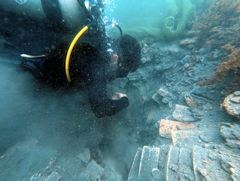
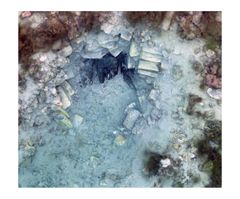
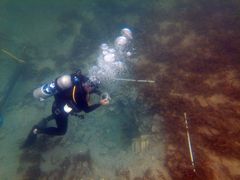
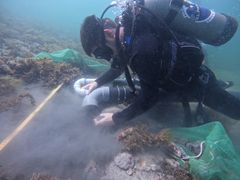
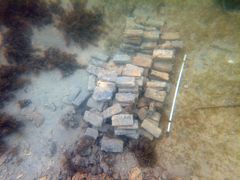
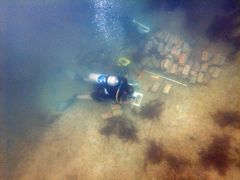
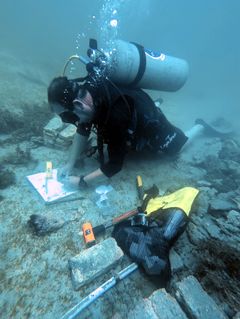

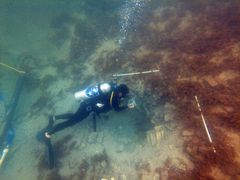

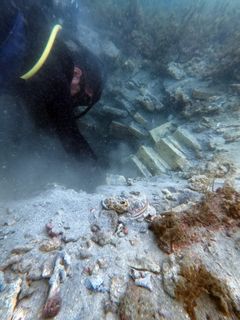
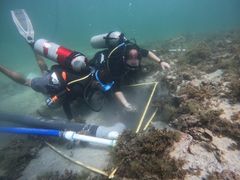
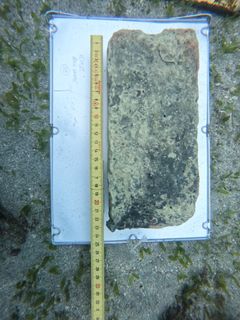



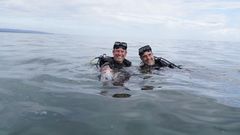
Nationalmuseet
Nationalmuseet er Danmarks kulturhistoriske hovedmuseum. Det ligger i Prinsens Palæ i København, hvor det har haft adresse siden 1849.
Nationalmuseet består foruden af besøgsstedet i København også af en forsknings-, samlings og bevaringsafdeling, der tager sig af konservering og bevaring af Danmarks kulturskatte samt forskning i både kulturhistoriske og naturvidenskabelige emner.
Der er 18 besøgssteder knyttet til Nationalmuseets organisation, som Rane Willerslev er direktør for.
Følg pressemeddelelser fra Nationalmuseet – Forskning og Kulturarv
Skriv dig op her, og modtag pressemeddelelser på e-mail. Indtast din e-mail, klik på abonner, og følg instruktionerne i den udsendte e-mail.
Flere pressemeddelelser fra Nationalmuseet – Forskning og Kulturarv
Nyt studie: Klimaskabt tørke nedbryder fortidsminder på rekordtid27.11.2025 08:42:00 CET | Pressemeddelelse
Et nyligt publiceret studie viser, hvor hurtigt udtørring nedbryder arkæologiske fund i danske moser. Genstande af træ kan ligge bevaret i moser i flere tusinde af år, men når tørken rammer, kan de blive ødelagt på 2-3 måneder.
Ida Nicolaisen modtager Nationalmuseets jubilæumsmedalje29.9.2025 11:38:49 CEST | Pressemeddelelse
Efter en livslang indsats indenfor forskning modtager antropolog Ida Nicolaisen Nationalmuseets æresmedalje. Overrækkelsen fandt sted til Forskningens Aften.
H.M. Dronning Mary deltager i Forskningens Aften på Nationalmuseet11.9.2025 15:18:35 CEST | Pressemeddelelse
Når Nationalmuseet præsenterer sin nyeste og mest banebrydende forskning i et eksklusivt arrangement den 24. september, bliver det med deltagelse af H. M. Dronningen.
The National Museum discovers new details regarding Viking hairstyles27.8.2025 06:05:00 CEST | Press release
A small, unique gaming piece from the Viking Age reveals a hairstyle that was probably in vogue among Vikings at the time of Harald Bluetooth. This is as close as we get to a portrait of a Viking, says scholar.
Nationalmuseet opdager nye detaljer i vikingernes frisure27.8.2025 06:00:00 CEST | Pressemeddelelse
En lille, unik spillebrik fra vikingetiden afslører, hvilken frisure der formentlig var på mode blandt vikingerne på Harald Blåtands tid. Det tætteste vi kommer på et vikingeportræt, mener forsker.
I vores nyhedsrum kan du læse alle vores pressemeddelelser, tilgå materiale i form af billeder og dokumenter samt finde vores kontaktoplysninger.
Besøg vores nyhedsrum